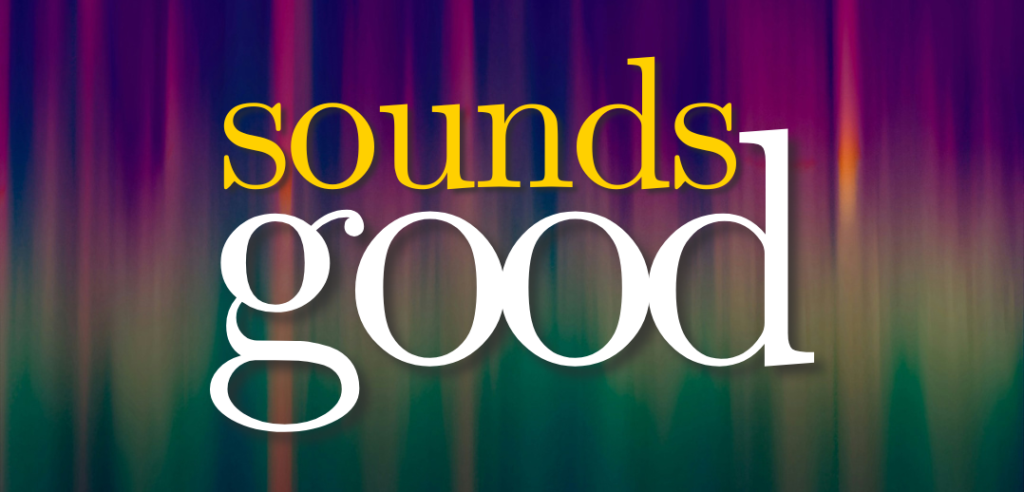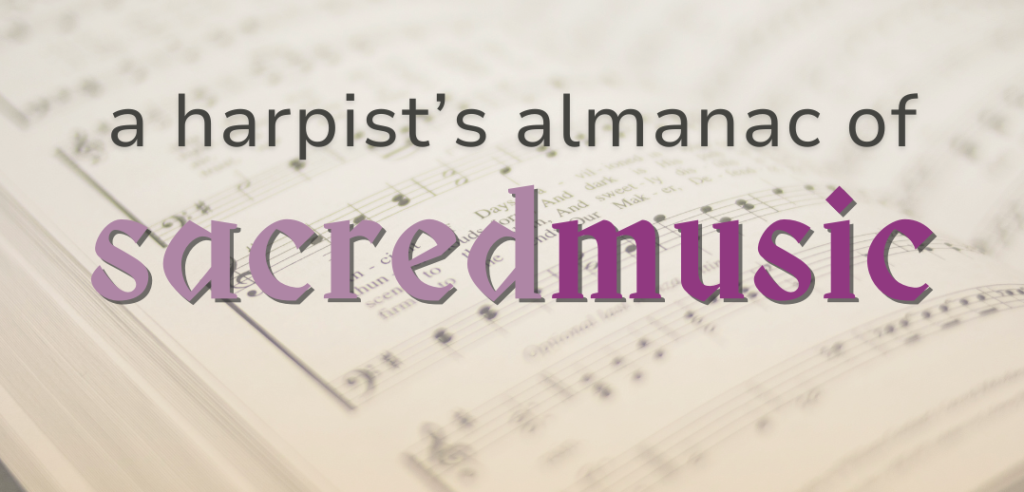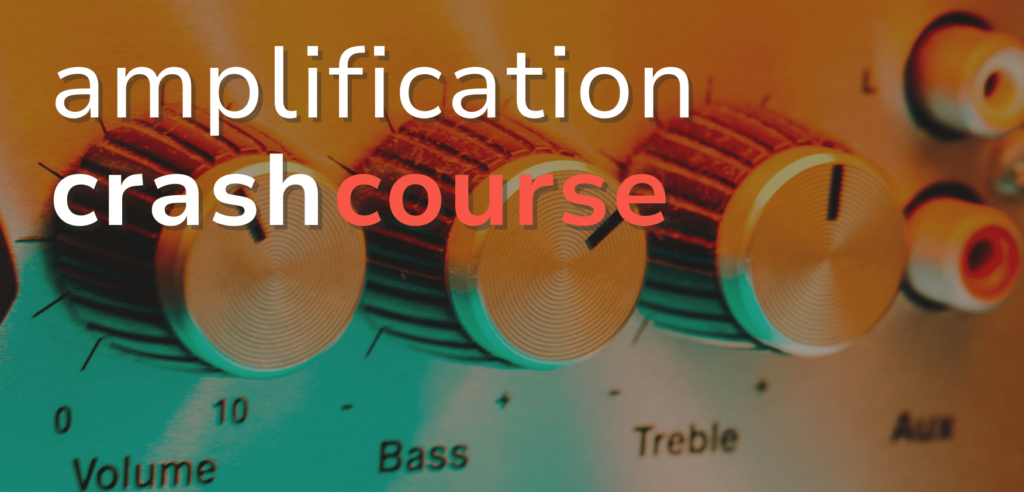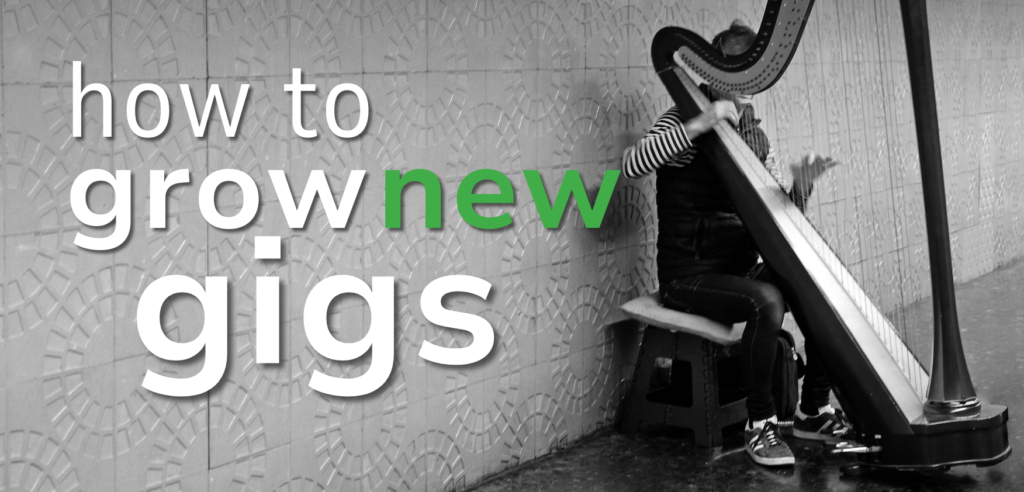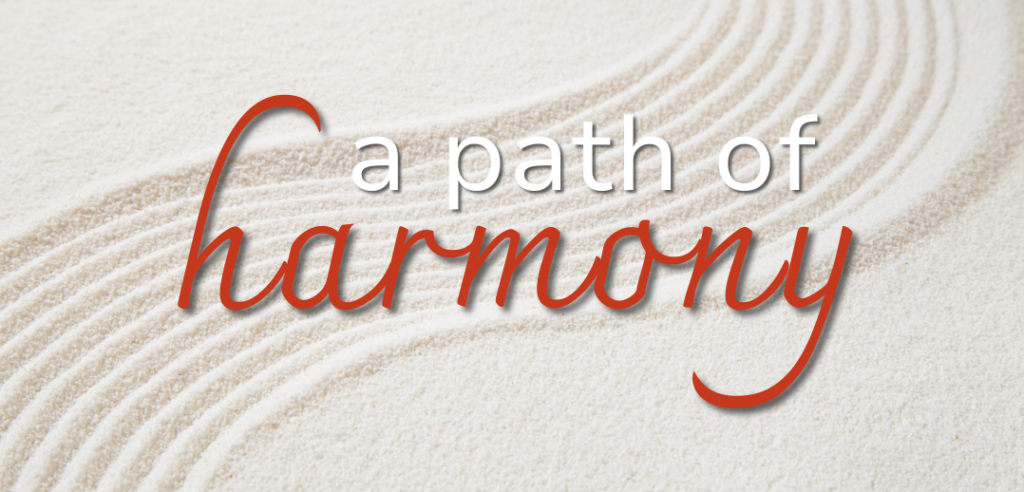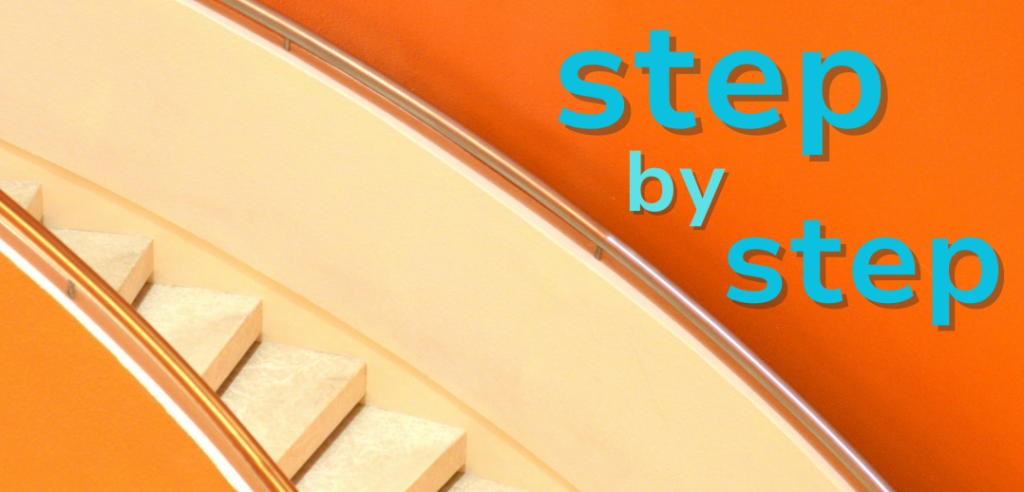I love beef stroganoff. My father often made the dish for supper when I was a kid, and it was the best. During the past year I have eaten beef stroganoff at four different restaurants. When ordering this dish, shouldn’t I already know what it tastes like? Shouldn’t stroganoff dishes taste similar to one another? They have the same, or at least similar ingredients, don’t they? In actuality, every beef stroganoff dish I’ve ever eaten has tasted vastly different from any other. Beef stroganoff dishes are like different harps, and like different harpists playing these harps. No two match exactly the same.
Our lives are filled with a variety of choices we are offered every day: the food we eat, the clothing we wear, or how we decorate our homes. These choices make life really interesting and worth noticing. They delight our senses, and invite us to be grateful.
Creating tone color on the harp is no different. Pianists often talk about how they make tone color through technique and through the sustain pedal. They stroke the keys and shape their bodies and fingers differently during various pieces of literature depending on the music they want to create. They use the pedal to mix and swirl the sounds they hear. Articulation, dynamics, nuances, phrasing, and more, all comprise tone color.
As harpists I don’t believe we discuss tone color enough. I am not talking about the sounds of extended techniques on the harp, which are tone colors all in themselves. I am speaking of the tones we make from the sounding strings. After all, we are producing every single nuanced sound we hear by the flesh on our fingers. Carlos Salzedo, in his Modern Study of the Harp, notes, “This new musicalness…finds in the harp, and in the harp alone, a perfectly responsive medium…thanks also to the tone-effects, so diverse and as yet so little known, which spring naturally from the direct contact established between the sensitiveness of the executant’s touch and the vibration of the strings producing the sounds.”
Let’s talk about different ways to color the sounds we make on the harp.
Beautiful tone begins before we touch the harp
Supple is a word I hear most often by harp teachers describing a beautiful tone, no matter their technical approach. Henriette Renié was famous for her integration of this concept in her teaching. She said, “I am far from changing all the opinions of the past, although modern music has need of a special technique which is more extensive and more ‘supple’ in order to adapt it.”
Suppleness in harp playing can mean sounding with graceful flexibility and with great ease. A supple tone begins by releasing all tension in the body and the arms before bringing the harp back on the shoulder. Harp playing can sound both relaxed and supple, provided the body should be both free from tension and be flexible. Then, the potential energy and color of the strings can vibrate and sing.
Have you ever tried playing a chord with a very tight hand like a fist, then staying close to the strings and not raising afterwards? It is incredible how the sound changes when the hand is completely relaxed and then the arm raises. Even the slightest follow-through motions create vastly different sounds if we really listen.
Any tension held in the body while playing the harp is potential energy withheld from the string when it speaks, and tension can damage and fatigue the body. Relaxed movements will allow the string to speak most resonantly with whatever dynamic we choose. Of course, there are many ways we may like the string to speak, and sometimes we need to pluck the string with a more forceful, quick approach, or with a lighter gesture. It’s still important to stay relaxed even before we start playing.
The fundamentals of tone production
We are commonly taught that playing a string is a single-motion active process, with the sounding string as the goal. This approach can produce satisfactory results, but it doesn’t allow us to explore how the hand moves, nor how to produce different sounds. Tight playing also results if we’re not careful.
Instead, let’s try breaking down the process of playing a string into two parts. The preparation of the string is the active process, and release of the string is the resulting motion.
In the active process of preparation of the string, there are two components:
1. Place—position our hands appropriately on the strings. We all use the word “place” in our teaching and in our harp playing. There’s no other word that so succinctly says “put your fingers on the strings and get ready to play these notes with this fingering!”
2. Press on the string—actively engaging the potential energy of the string before it sounds.
The resulting motion of preparing the string is the release of the string. When we play the string, two motions happen automatically. We release the string and simultaneously relax the hand. The motions of releasing and relaxing happen simultaneously, however, it may help to think of them in the order of release and then relax when you are first trying this concept.
Awareness of your approach
Awareness is at the center of a beautiful tone: awareness of keeping the body relaxed, of feeling grounded and centered at the harp, and of the body’s follow-through movements after playing the strings. Everything affects sound and the tones we then create. The following check-ins may help you be more aware of your body as you play:
- Assess your good posture as you sit behind the harp with it on the ground. A mirror can help ensure that neither your body, shoulders, nor head are tilted to one side.
- Hang your arms and hands by your sides and feel gravity pull on them. Be aware of feeling truly grounded on your bench as well as centered and relaxed. A few deep breaths can help you do this. If you need to, slowly swing your arms by your sides to dissipate all possible tension.
- Slowly and mindfully, bring your hands to the harp’s soundboard, and bring the harp back on your shoulder. Pay attention to your hands doing this; don’t use your shoulders to bring back the harp. Keep them stable and centered. You should almost never need to physically move your shoulders to play; rather, they remain supple.
- Take a few more deep breaths and be aware of all tension leaving your jaw, neck, shoulders, back, arms, torso, and legs. Again, be aware of feeling grounded at the harp.
Bring your hands to the harp to play a chord. Keep your shoulders relaxed and stable, as well as your torso, neck, and head. Think of playing the chord as one movement from your hands to the strings: your fingers play the chord, and then follow through up and away as you leave the strings. - Do this several times in a row while playing the same chord (like the same triad or seventh chord in each hand). Each time, breathe in and out and feel your body dissipate tension. Prepare the energy of the string before playing, and after playing, listen for a round, resonant, relaxed, and full tone. You may even want to drop your arms to your side after every chord.
- After several repetitions, set your harp down. Repeat from number two on down from this list. As you try this list, with mindfulness and awareness, start approaching your music in the same way. Of course, there are different articulations and speeds of music. This list serves as a baseline for a solid tone. Make sure you are not manually closing your fingers into your palm. Instead, think of your palm as simply the direction of the motion of your fingers after playing a string. This will help you to remain supple as you release the string.
- Be patient with yourself. These exercises will take time to become second nature in your repertoire, especially if you are used to playing with some tension in one or more areas of your body. Your body will thank you, as well as your ear, and your heart: many things are now possible in your musical expression!
Posture perfect
If you are like me, you were taught when you started playing the harp that it rests on the shoulder and on the knees, or—mainly on the shoulder. Fundamentally this is a good concept for beginning harpists. It helps them begin to know the feel, the balance, and the size of the instrument. Once these fundamentals are comfortably established, challenge yourself and your students to really listen and constantly engage the ear to notice each sound you create from each string.
As we advance, we can notice more nuance in how our sound responds to our body posture. The fewer body parts that touch the harp, the more resonant is the resulting sound, from the the vibration of the wood of the harp’s body and the soundboard. This can be a good place to start experimenting.
Try balancing your instrument on just one knee and playing a passage that doesn’t require pedal changes. Listen to how strong and resonant the tone is, as opposed to resting it on both knees and the shoulder. Be sure to stay relaxed in the shoulders. At first, your shoulder(s) may want to tighten up to control your arm and hands; patience is the key. Be sure not to round your back as you play down low or up high. Bending forwards and backwards from the hips with a tall back is one key to healthy posture.
Tone quality and color start with our ears
Good posture and technique can only get you so far in exploring tone color. The guiding light to make the musical experience come alive is our ears. Our ears guide our creation of the music. It’s important to find effective and efficient ways to practice and engage our ears. Our ears can also help correct technical deficiencies, and technical security is synonymous with musical freedom within a performance. Our ears should be focused on tone quality, articulation, nuance, detail, artistry, the composer’s intents, the performer’s intents, and the capabilities/limitations of the harp.
Perhaps we can more accurately and effectively discuss how to create music in terms of listening, rather than specific technical approaches. If we let our ears guide us, it can better shape how we choose particular technical avenues within our music, like articulations, fingerings, or hand and arm gestures.
Storytelling our tone
Tone quality can tap into a completely different mood or color than we ever imagined. A significant memory of mine several years back forever shaped how I think of making music on the harp.
I attended a workshop by performance psychologist Noa Kageyama. As a participant, I was asked to sit at the harp and think of three of my favorite performers. Then, I was asked to start playing a piece of music in the style of how this performer would play it. This was an inner-world changing moment for me. As an introvert at heart, this exercise invited me to jump outside of myself and become someone completely different at my instrument. It was completely exhilarating! I chose three of my favorite artists: my close friend and harpist Dr. Matt Agen, French harpist Isabelle Moretti, and my mother, Dorothy Brandwein, who is a beautiful pianist. I played some of Jesús Guridi’s Viejo Zortzico, and I will never forget how I felt. Besides accepting the invitation to literally become someone else at the harp for a moment, this exercise opened up my world of listening to my playing in a completely different way.
This exercise is not to suggest role-playing someone else at the harp every time you sit down to perform. But what it does is highlight in a very significant way the role that our ears have in shaping the music we create. What comprises this music? Tone quality, tone color, and how we make our instrument sound. How do we know how to express this music? Our ears shape it.
Try this exercise yourself, or try it with your students. It can shape and highlight ways that we tend to always listen to our playing, or ways we tend to never listen to our playing, by challenging us to literally play like someone else.
Storytelling is at the heart of being an artist. If we imagine our presentation as a three-act play, we are telling the acts of the composer and their music, we are sharing the voice of the harp, and of course, we are telling our own stories as a musician/harpist/performer. Listen to how Isabelle Moretti, Nancy Allen, Judy Loman, or Sivan Magen shape their playing.
Learning from other musicians
Throughout the years I’ve attended masterclass workshops by world-class instrumentalists. All of these musicians taught one common concept: how to create various colors on their instrument—colors to describe the music, colors to describe the performer’s interpretation, and colors to help let their instruments sparkle. Yes, the technical foundation is extremely important up until a certain point, then our ear takes us over, through, and around the horizons of exploring our artistry.
Each instrument has different ways of creating various sounds and articulations. I challenge you to start conversations with your musician friends and colleagues about tone color. Renié shares it best: “The technique is only used to express what one has in the heart without being bothered by the fingers.”
Have fun and explore
Salzedo invited us to explore our beautiful instrument in Method for the Harp when he wrote, “…no other musical instrument, except the pipe organ, offers such a wealth and variety of musical color and effect.” Here are some suggestions to start exploring.
Experiment with playing triads or seventh chords with varying types of articulation, such as a slower or quicker follow-through of the fingers, or a quicker or slower arm raising. Explore raising towards the column, raising towards your torso, or raising straight up or down for varying tone colors. Remember to stay supple and keep your elbows as the center of your movements: they stay the pivot point after raising, so don’t pull off of the string with your arms or you’ll get a tight tone. Each one of these movements creates even a subtle difference in color if you really listen.
Experiment with putting more or less of your fingertips on the string. The more fingertip (the padded part of the finger) you put on the string—quite literally, the more of the string you will play. The result will be a fuller tone. Putting less fingertip on the string will allow for a more articulated, sparkly, and focused tone. You are now placing on less of the string to create a shift in timbre.
I was preparing for an audition several years ago and discovered the incredible value of being able to manipulate my fingertip on the string. It is good to be able to choose where to place your fingertip on the string to create tone colors, rather than keeping a callus that lets you play on only one part of the fingertip.
Remember that the string needs to vibrate for its potential tone color to shine. If you play so softly that you don’t actually see it vibrate, even a little—this doesn’t result in a true dynamic. Explore with pressing more or less, and become aware of how your ear guides your finger to create shifts in the strength of the tone. Always engage your ear. Your ear will tell your fingers how to play based on what tone color you have in mind.
Another element to keep in mind is that the innate color of a string changes based on what it is made of. The string materials on a harp—wire, gut, nylon, to name a few—fundamentally all sound different from each other. We can use this to our advantage. We can pluck the wires much higher, in the middle, or much lower to create different sounds. When plucked in the middle, the string will sound round and resonant. When plucked lower, or much lower on the strings, the color will change and sound tight or focused, and the string will be easier to control, especially when playing quickly or playing repeated notes.
Gut strings are similar in the way they operate: when they are played right in the middle of the string, the sound “blooms” and is super resonant. When played at varying degrees of nearness to the soundboard, the sound changes quite drastically. Be sure to use your ear in the context of what you’re playing to decide what tone color suits the piece, and when. Sometimes I’ll pluck a string on about five different locations in the middle of just one piece! It’s a delight to choose exactly the right color that the piece needs.
Nylons in the upper register sound very sharp and focused to my ear, whereas the gut strings in the upper register sound similar in color to the middle register of a gut-strung harp. I prefer the clarity of nylons in those octaves, especially for orchestral harp parts and harp solos. I find gut strings in the upper register create more of an even tone color of the harp, and are better suited for chamber music.
Building a vocabulary
There are a few words we use a lot when describing the sounds of a harp. Papery is one to describe a tone on the string that does not have a lot of depth. Resonant and round are other words used often that describe that beautiful tone we all know and love that sounds warm, rich, and quintessentially harp!
Here are other adjectives to describe the sounds in harp playing. What are some of your favorites, and how would you describe them?
articulated
large
thin
punchy
sharp
small
lush
intimate
focused
warm
violent
velvety
More reasons to experiment
“There is nothing difficult. There are only new things, unaccustomed things.” —Carlos Salzedo
I was teaching a prospective harp student several years back, and they had never heard of the concept of tone color. I was so excited to introduce them to listening to nuance and detail. Listening to ourselves and our music is so much a part of the fun of playing. Here are more ways to experiment with your hands and body that change what you hear, and remember to stay relaxed!
Try playing higher or lower on the strings, as appropriate to the music and note values. You’ll find that really quick playing usually is easier when you’re lower on the strings. Baroque music lends itself well to this placement. Romantic music sounds fantastic right in the middle of the strings.
Try playing with more or less fingertip on the string. This quite literally lets you play on more or less of the string, which in turn, affects the sound. This is a great approach for really quick, quiet, or staccato-sounding passages in either hand.
Try playing more tilted to (parallel) or across (perpendicular) to the stings. These two angles of playing help facilitate point number two on this list. So many colors can be made from each way of playing, as appropriate to the style of music and difficulty level.
Try playing with the harp on just your shoulder, or just your knees, or all three. Or, just on one knee. This changes its resonance, volume, and control. Experiment with your right forearm touching the corner of the soundboard; be careful not to use it as a crutch, though—just as a balancing point. Explore what your playing sounds like with the forearm off the soundboard, as long as you stay relaxed. Try these two ways while improvising two-handed chords or arpeggios; they sound completely different within these two approaches. Sometimes my right forearm is touching for simple stability and control, and other times it is not when I would like a very particular resonant sound across the entire instrument.
Play the string while articulating the largest knuckle on the hand, or play the string while slowly articulating one or both of the smaller knuckles on the hand in soft playing (remember to stay relaxed and never articulate up with the knuckles; this is bad for the hand). This approach facilitates more or less articulation of the finger while playing the string, which, in turn, affects the movement and color of the string.
Experiment with using wrist action vs. forearm raising after playing. As you release the string, the quicker or slower motion affects its resonance and can offer a larger or smaller sound. These movements will also help facilitate either a quicker-sounding articulation or slower articulation, respectively, and let you better control the timbre of certain passages.
Combining our ears with our emotion and intellect tells our fingers what to do, not the other way around. This complex inner ear is guiding us through creating the music and colors we desire to create. Tone color in harp playing is as diverse as we choose to make it. Let’s keep expanding our conversations to better serve the harp, composers, and the artistry of performers. Let’s keep listening intently to the sounds we create and share even more grand stories with our harps. Let’s be the instrument to our instrument. •







